Renner Safaris
SAFARI NEWS WITH PAUL RENNER
May 2016 Tanzani & Kenya Photo Safari
Dream, Explore, Discover
With Renner Safaris

We had it all on our February photo safari in Tanzania and Kenya! Leopards, lions, elephants, buffalo, rhinos, cheetahs, giraffes, babies being born, animals running for their lives from lions and cheetahs. It was a thrilling display of nature at her finest! We witnessed an astounding array of wildlife! Our group was thrilled and exhilarated many times over and we all returned home with many photos we loved! It was another magnificent photo safari with a fabulous group of people.
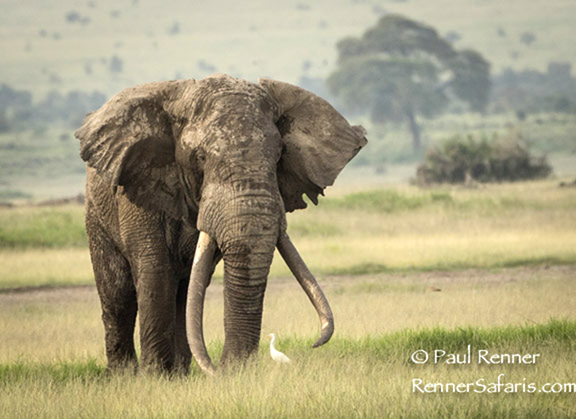
I felt blessed to see this old elephant with huge tusks. He was traveling with a herd but followed well behind them. It was as though he moved slowly but with a sense of pride. I wondered how many years he has been carrying the extra weight of his huge tusks and if his joints felt pain when he walked like so many of us in my generation. He walked slowly across the open plains until he caught up with the herd. He is a magnificent animal and I was honored to photograph him!
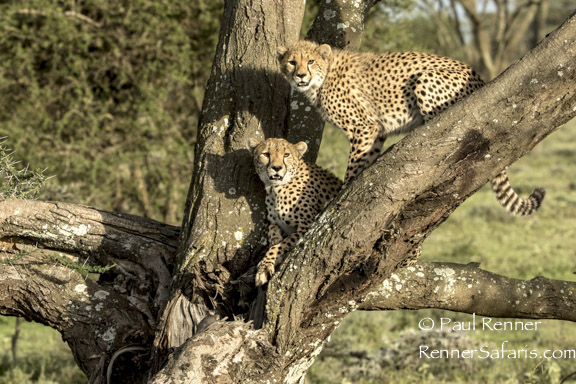
Late, one evening at Ndutu we had the pleasure of watching intimate moments between a cheetah and her nearly full-grown cub. They played hard, chasing each other up, down, and around trees and through acacia woodlands. Sometimes the cub would run ahead and mom would give chase. Then the mother would run up a tree and the cub would follow. We were the only vehicle there and we felt as though they were giving us a private show.
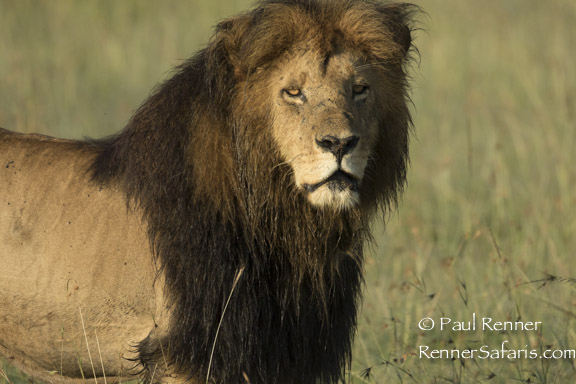
In the Masai Mara, we found the famous Marsh Pride. The tall grass was wet with morning dew making Blacky’s mane look even darker. With his thick, dark, mane, he is quite the distinguished-looking lion.
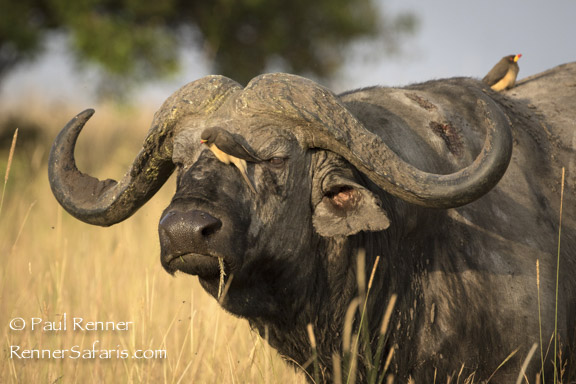
Old Cape buffalo bulls are said to be some of the meanest animals in Africa. If you looked like this and oxpeckers were consistently picking at the bugs on your skin, eyes, ears, and nose, wouldn’t you probably be mean too?

We found a large herd of elephants at the marsh. There were several young bulls, each one eager to test his strength by sparring with different challengers. The sound of tusks crashing together reverberated across the land. It was quite the battleground!
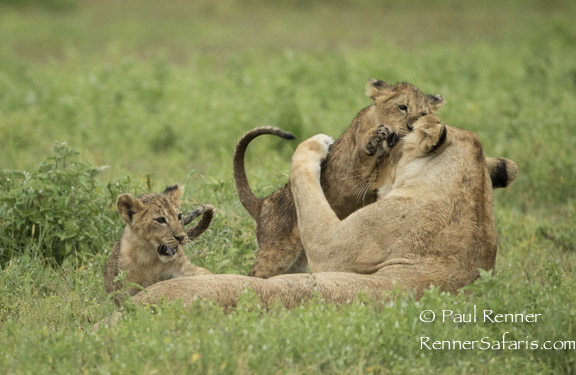
In Ngorongoro Crater, I was able to watch three lionesses with nine six-week-old cubs. Playing and nursing were the game of the day. It appeared that to the cubs life was just a game to enjoy. The skills learned from each other are what will sustain them through life in the future.

Impalas are both elegant and graceful antelope. They protect each other by constantly keeping an eye out for predators. When one is spotted, the first to see it sounds an alarm similar to the sound of a barking dog thus alerting the others of the imminent danger.

We were making our way through tall grass when one of our drivers spotted this caracal. They are distinctive-looking cats with large ears sporting long tufts of black hair on the tips. Adults weigh up to 40 pounds. They are nocturnal so are rarely spotted during daylight hours. I have only seen a few of them so was thrilled when this one stopped in a clearing just long enough for me to grab a quick photo.
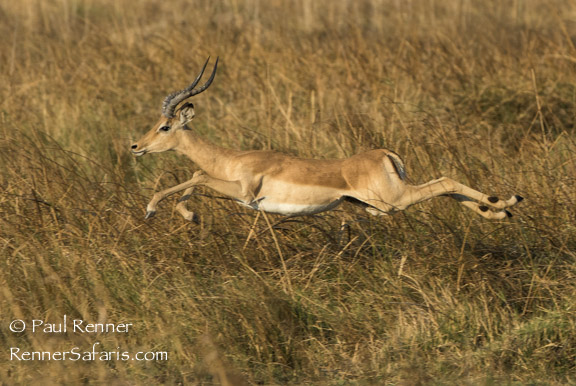
I love photographing action. Every so often I get lucky and come away with a photo I like. Being familiar with my camera and the behavioral pattern of the animal has helped me to capture this special moment in time.
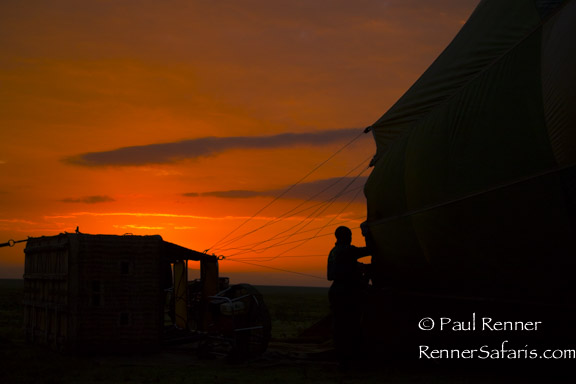
We were in for a special morning! The ground crew was busy, carefully preparing the hot air balloon for lift-off in the gorgeous pre-dawn light. Our excitement was building as the balloon filled with air. The sky was a deep orange with a few patchy clouds. Winds were calm so it was a perfect day for flying.
We hoped to fly over the great migration and our chances were good. It was in the area but the animals constantly move so one is never sure the wind will carry us over the heart of the massive herd. Today would be our lucky day!
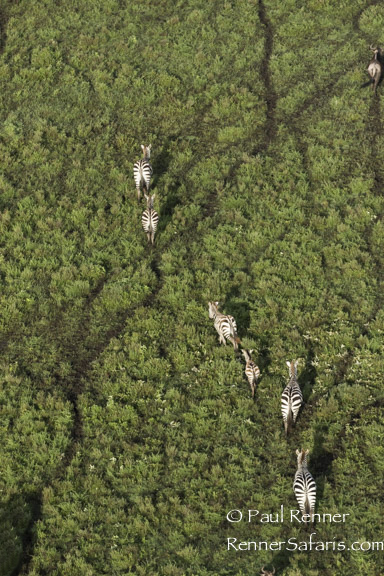
We started off seeing a few zebra.
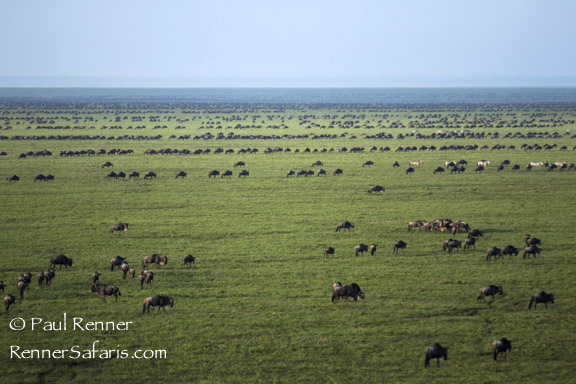
As we drifted along with the breeze, the plains in the Serengeti began to look dark instead of light. Soon light from the rising sun began to illuminate the land and we began to see long lines of wildebeest moving across the plains. We realized that the darkness was hundreds of thousands of animals, spreading across the plains like a woven tapestry as far as the eye could see! It was an astounding show of nature. I have been in the migration many times but had never witnessed the numbers of animals we saw that morning. It made my heart sing!
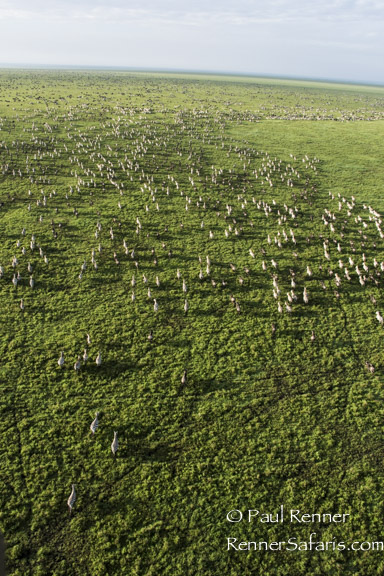
As we drifted along above the animals, they abruptly ended in a curved line on the plains. I wondered why the distinct “S” curve and then no animals..
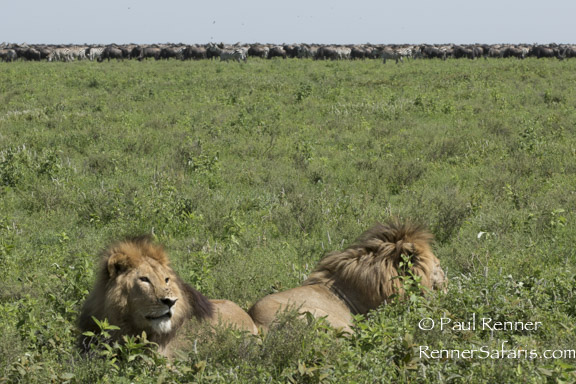
“Lions,” I thought. Sure enough, two large males were lying in the grass. A few hundred yards further on we encountered more of the pride. It was for good reason that the herd stayed away from the lions

The herd thickens!

Balloon shadow and wildebeest.
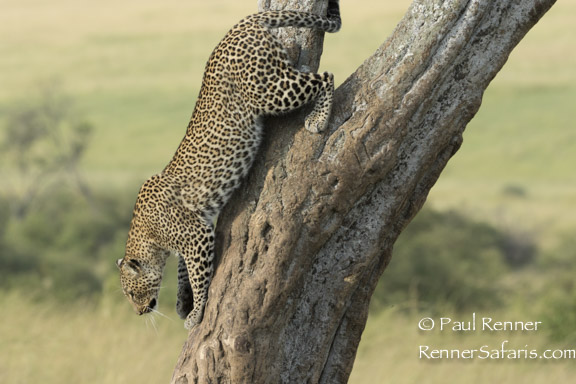
Upon landing in the Masai Mara, we were met by our fabulous guides at the airstrip. Julius said that a leopard had just been spotted only a mile and a half away. We all quickly loaded into the vehicles and were off. As is often the case with leopards, a female was sleeping up in an Acacia tree. The light was getting better by the minute so we waited patiently for some action. Suddenly she raised her head and then quickly, stood up and made her way down to the ground. She was a beautiful animal!
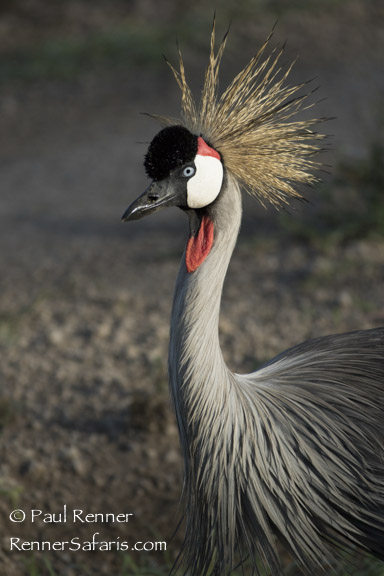
Early one morning at Ndutu, we found a pair of crowned cranes at the edge of the Big Marsh. They had no fear of vehicles so we enjoyed photographing them from a fairly close distance.

Stallions fighting again. It seems to be the guys favorite pastime.
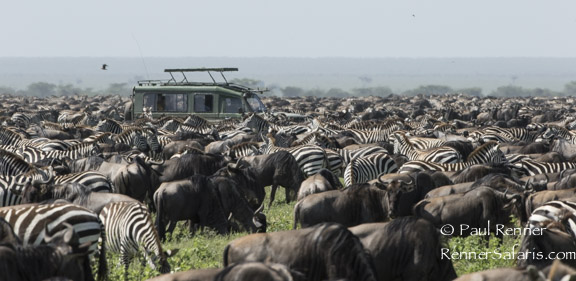
One of our vehicles making its way slowly through a sea of wildebeest and zebra!
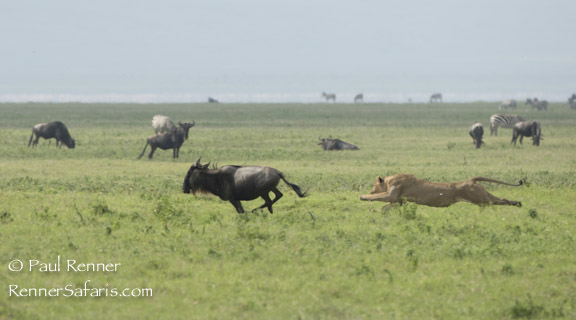
It looked like certain death for the wildebeest from a speedy lion. WRONG! The wildebeest suddenly veered sharply to the right, dodged the lion, and safely escaped leaving one hungry animal. One lucky wildebeest! It amazes me that of the animals not being chased, most don’t even bother to look up!
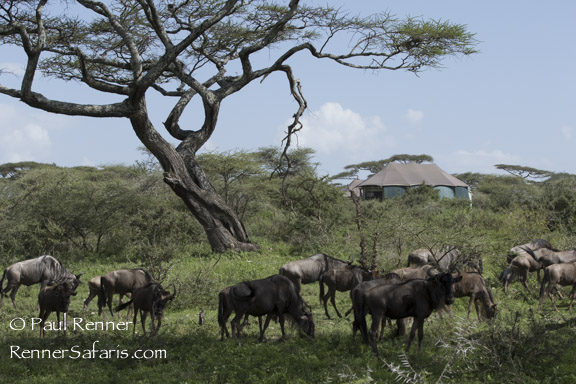
Sacred Ibis foraging for food.
Male Widow Birds grow long tail feathers each year and display them for only about three or four weeks during the breeding season. They try to dazzle and impress their prospective mate by jumping up 3 or 4 feet into the air multiple times. It is impressive mating behavior.

Giraffe Grazing Around Windsock by Runway
Giraffe on the runway and grazing around the windsock was an intriguing sighting. In Africa, we often see the unexpected or unusual! That is one of the ingredients that make our safaris so fun and exciting.

Each of our safaris has been a tremendous photographic experience! I can hardly wait to return to Botswana in May! Why don’t you join us on one of our safaris for the enriching experience of capturing your photographs with me on safari in the wilds of Africa!
Our safaris make a wonderful graduation gift that will be remembered and cherished for a lifetime!
I hope you will join me on safari in the future for your African safari adventure of a lifetime! May your days be filled with fantastic photo adventures and as always, remember to enjoy each day.
~Paul Renner
Join Us
For information regarding safaris and reservations call BEST SAFARIS
Prem Sharma or Gaby Gurrola
Phone: 714-349-7112
e-mail: info@bestsafaris.com
CST # 2073854-40
